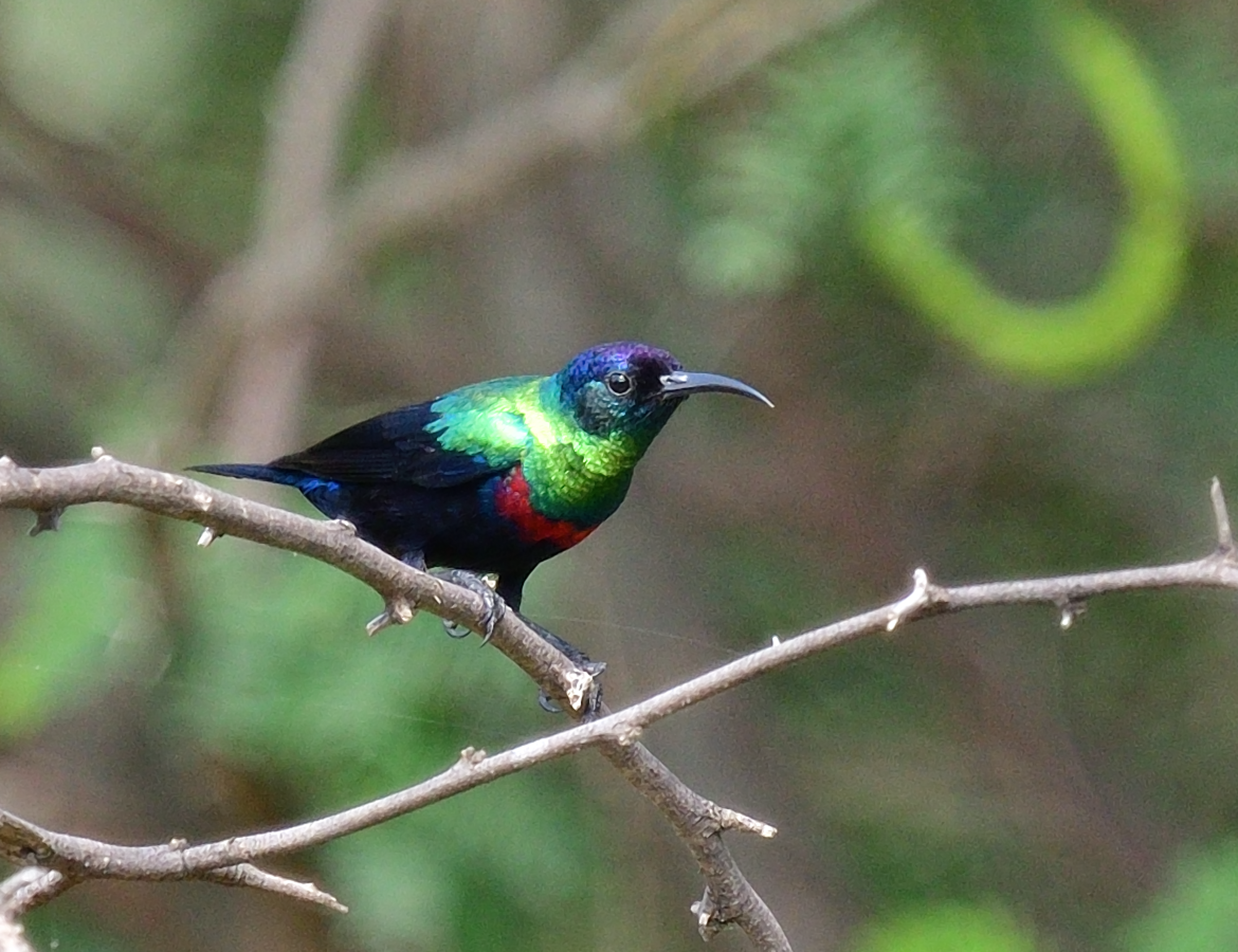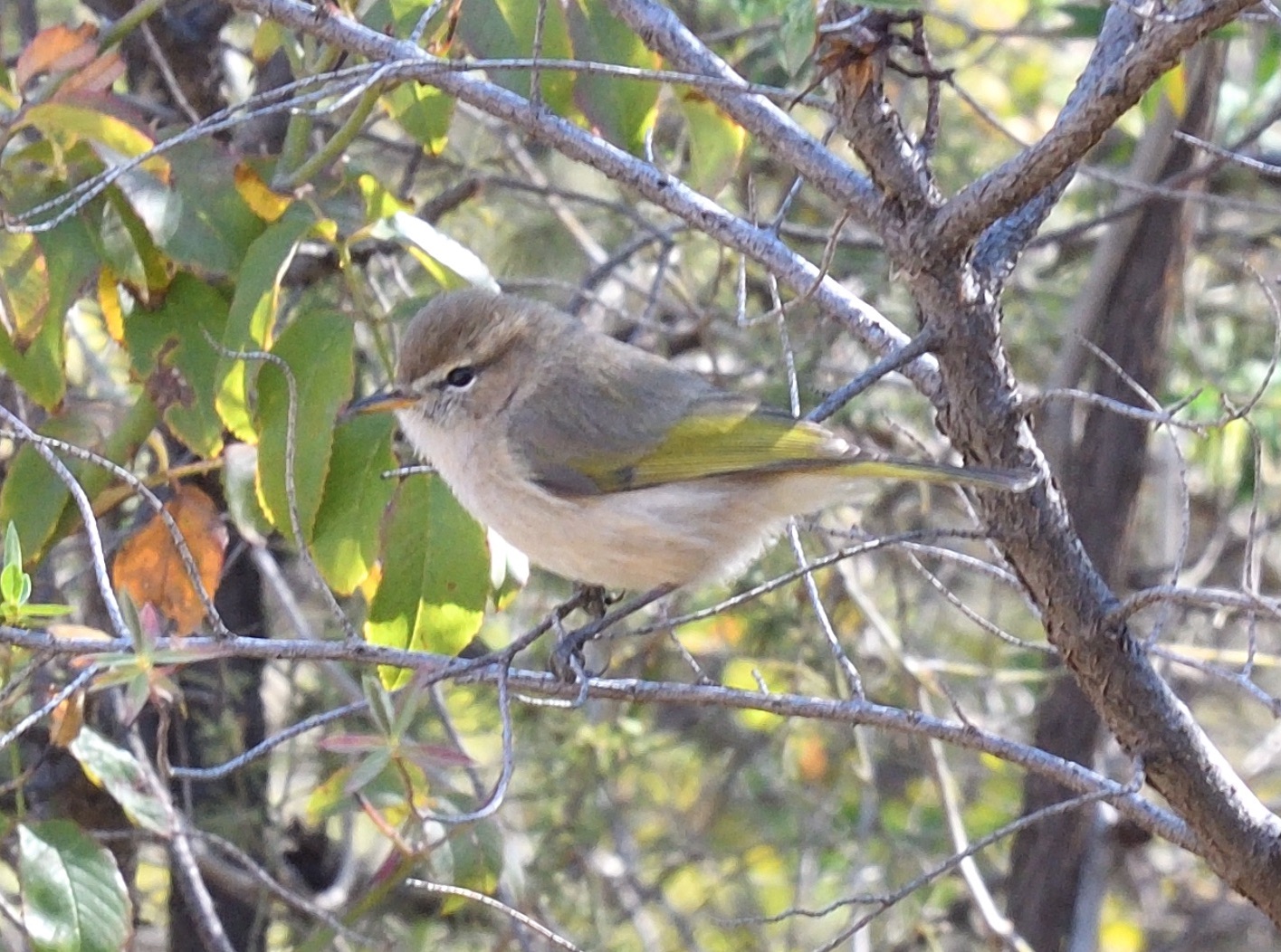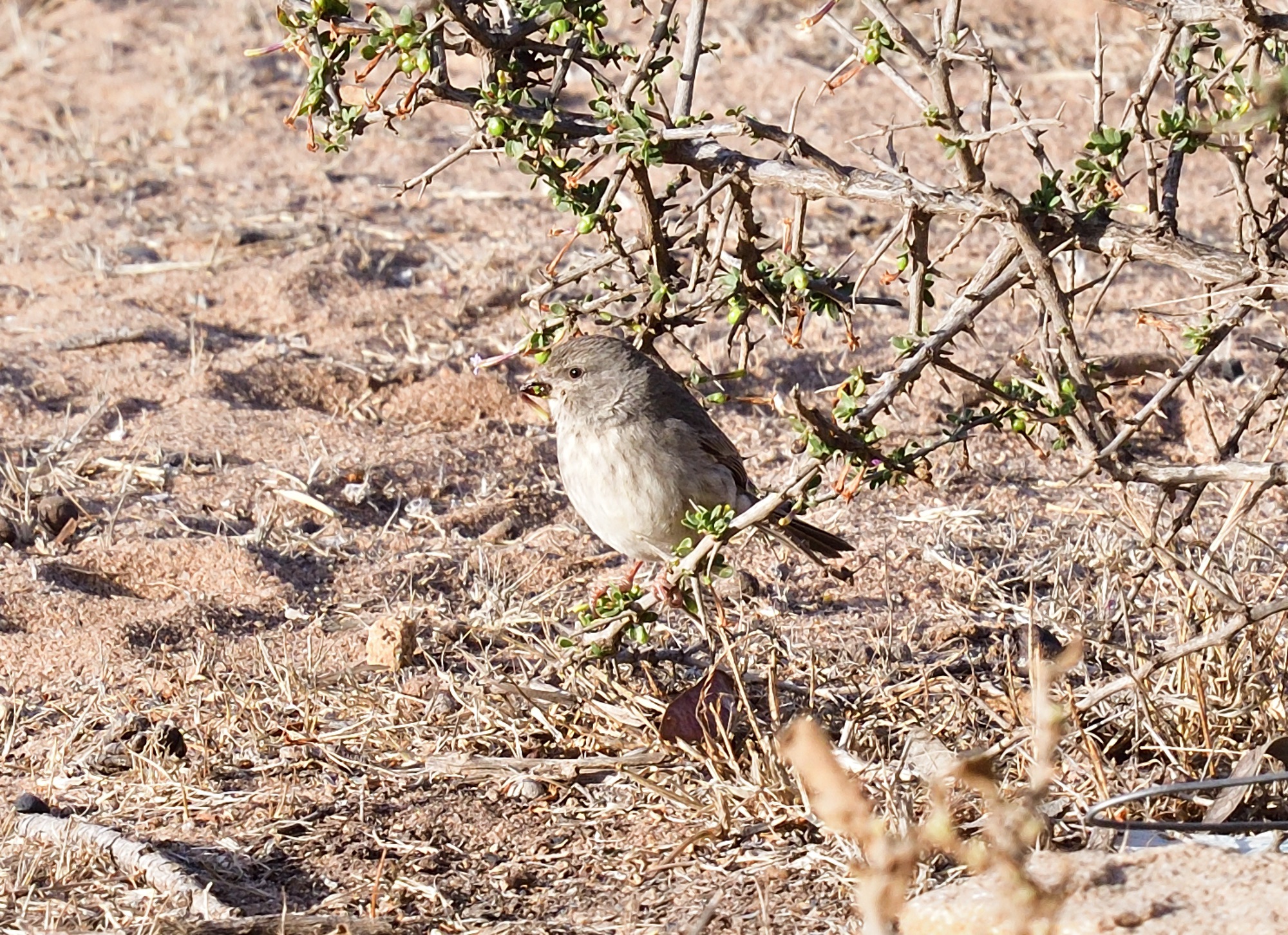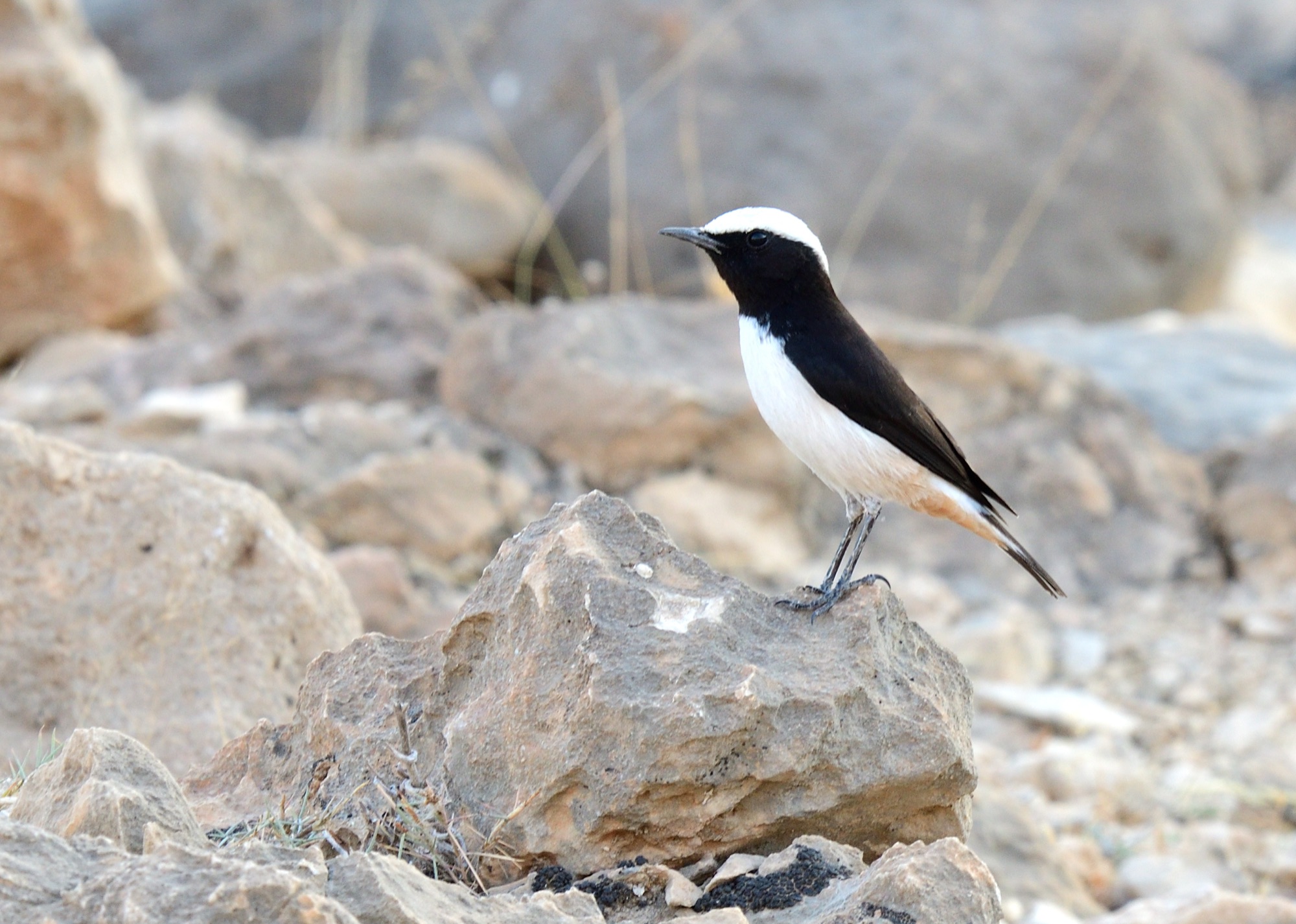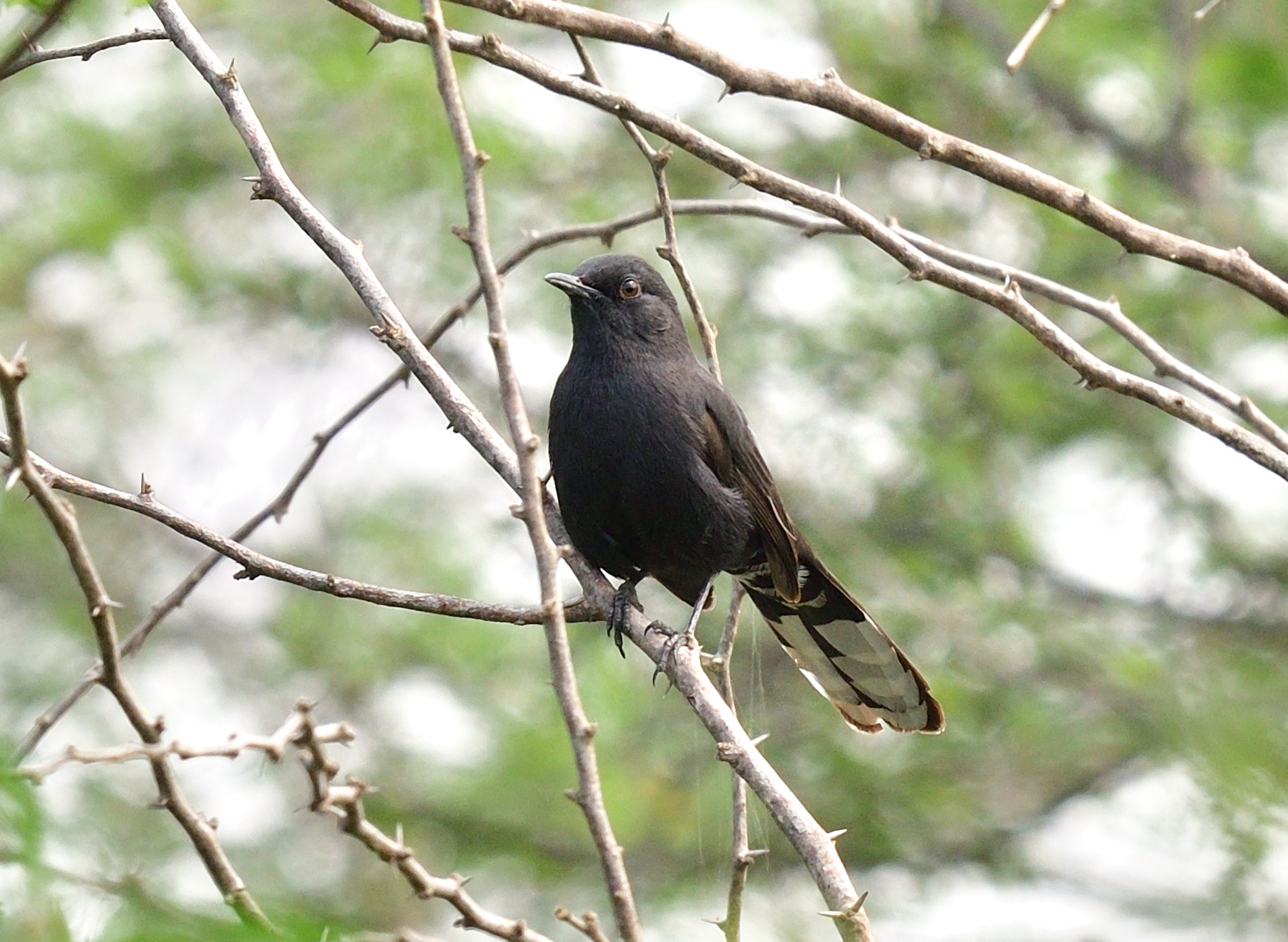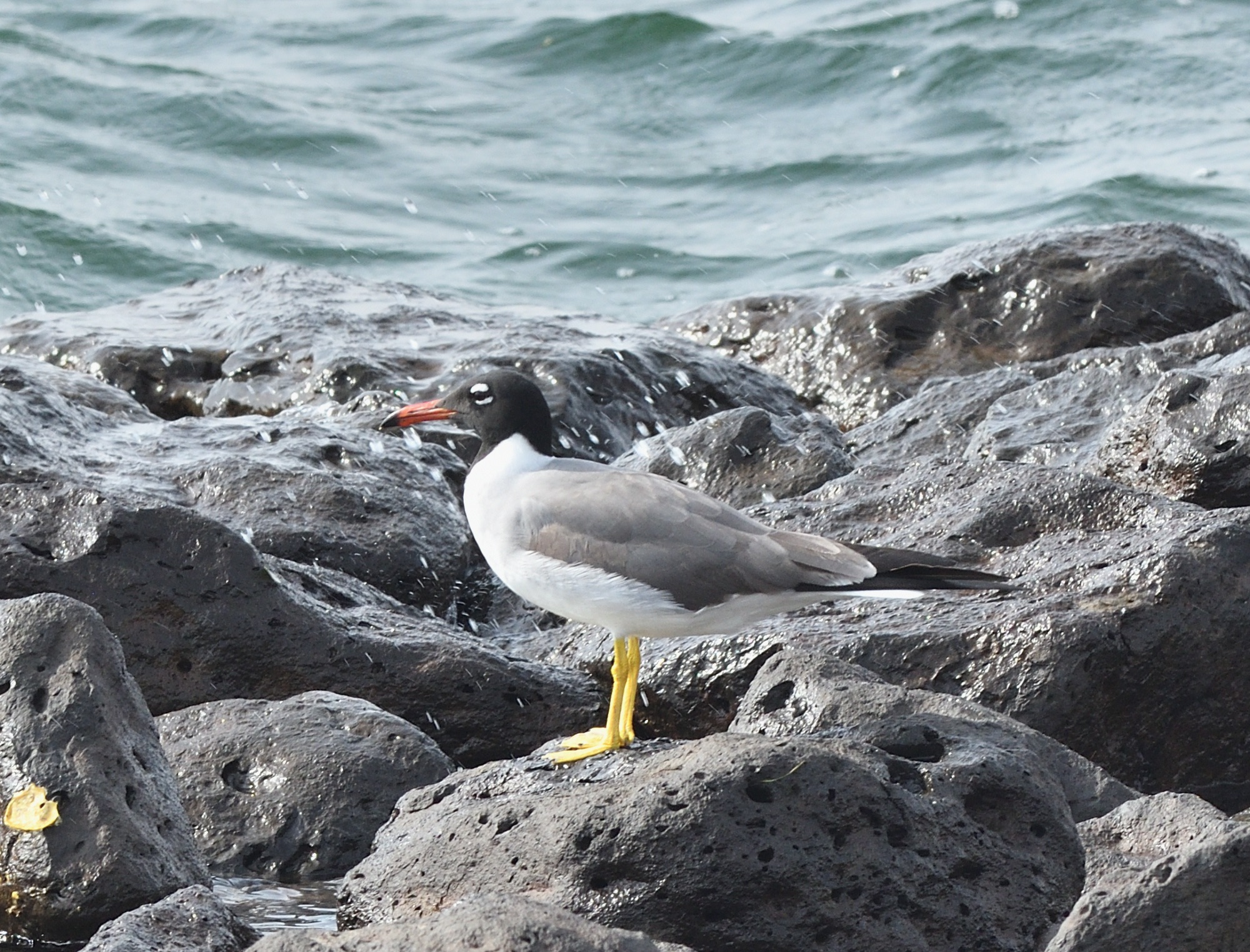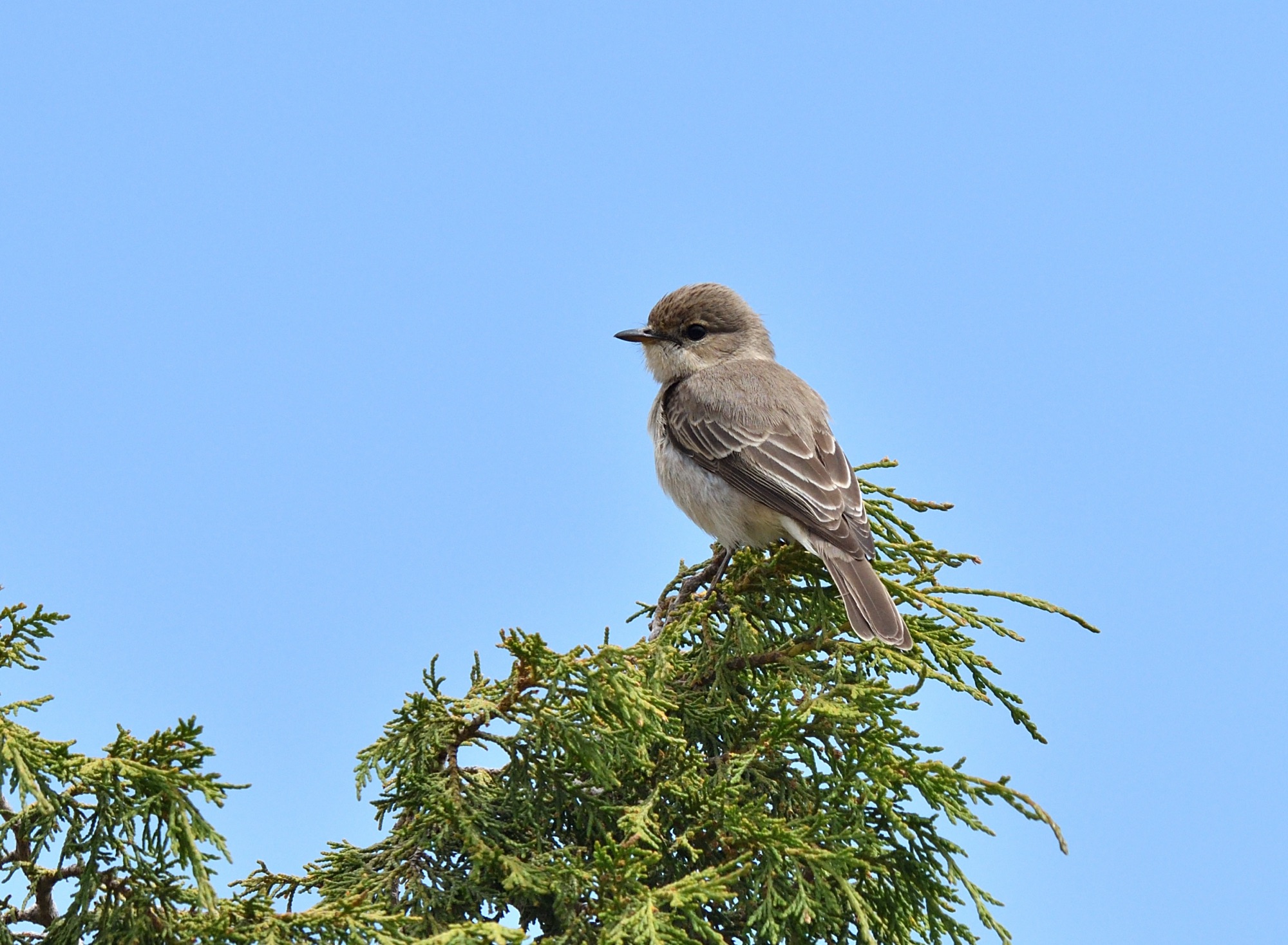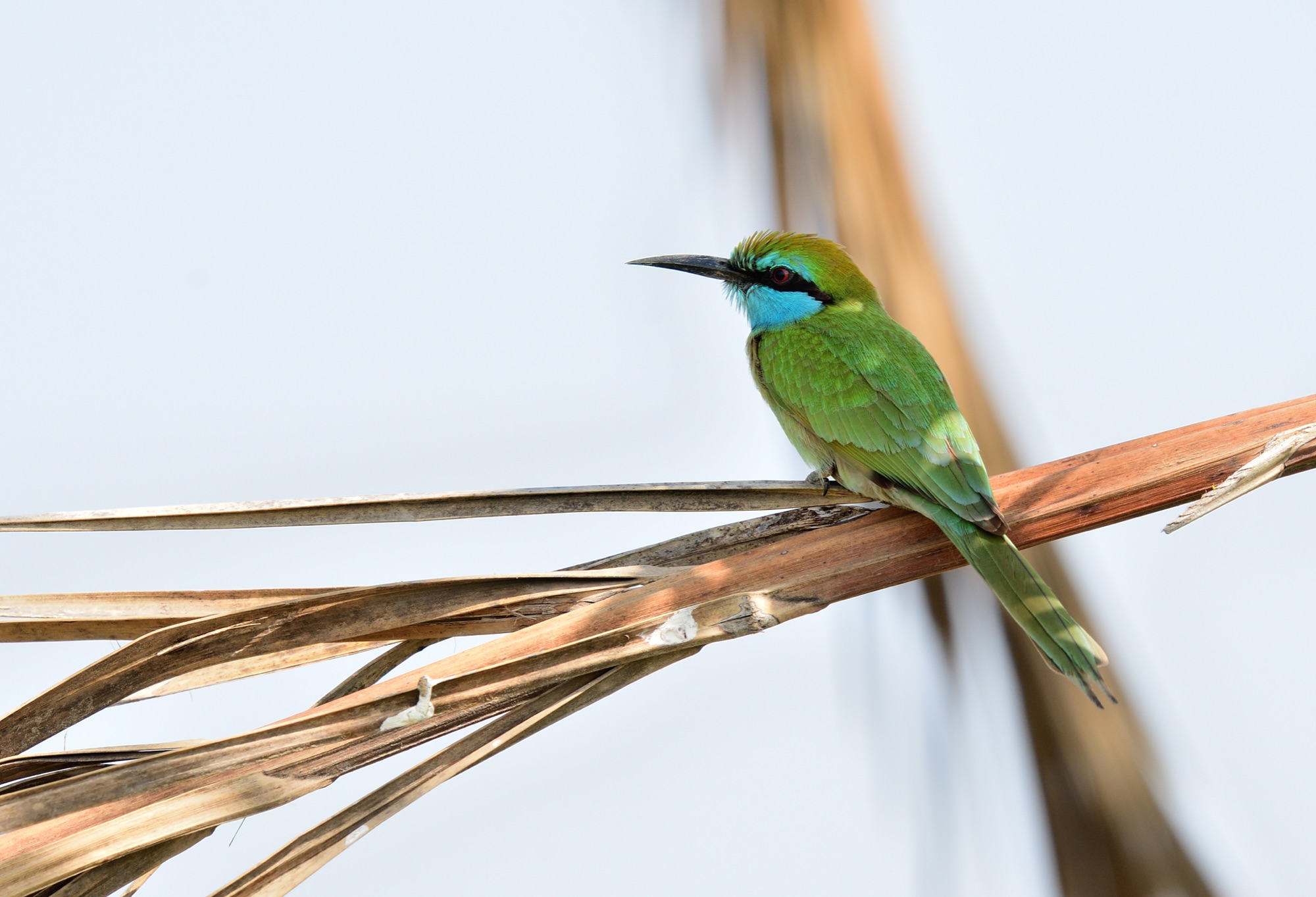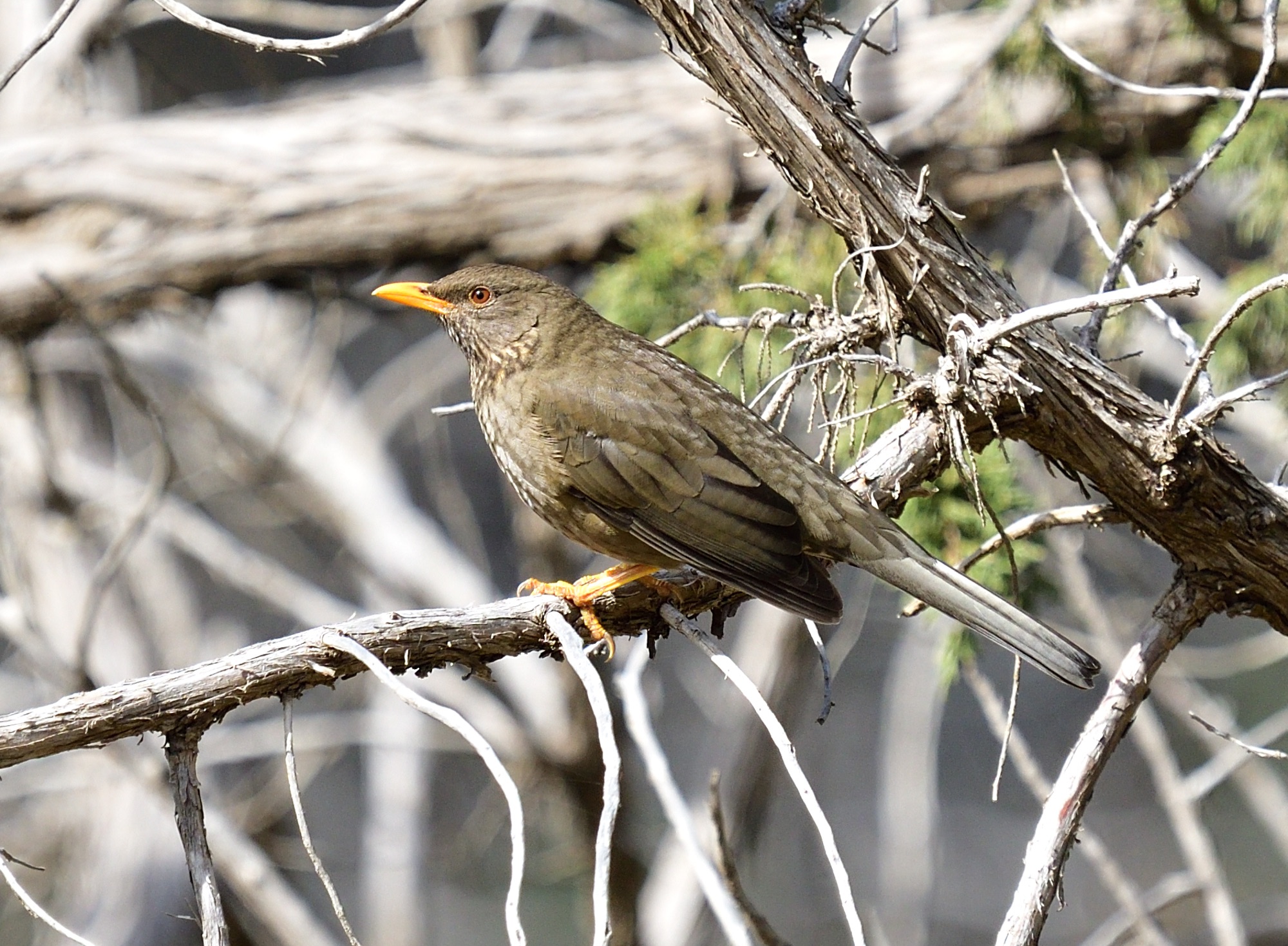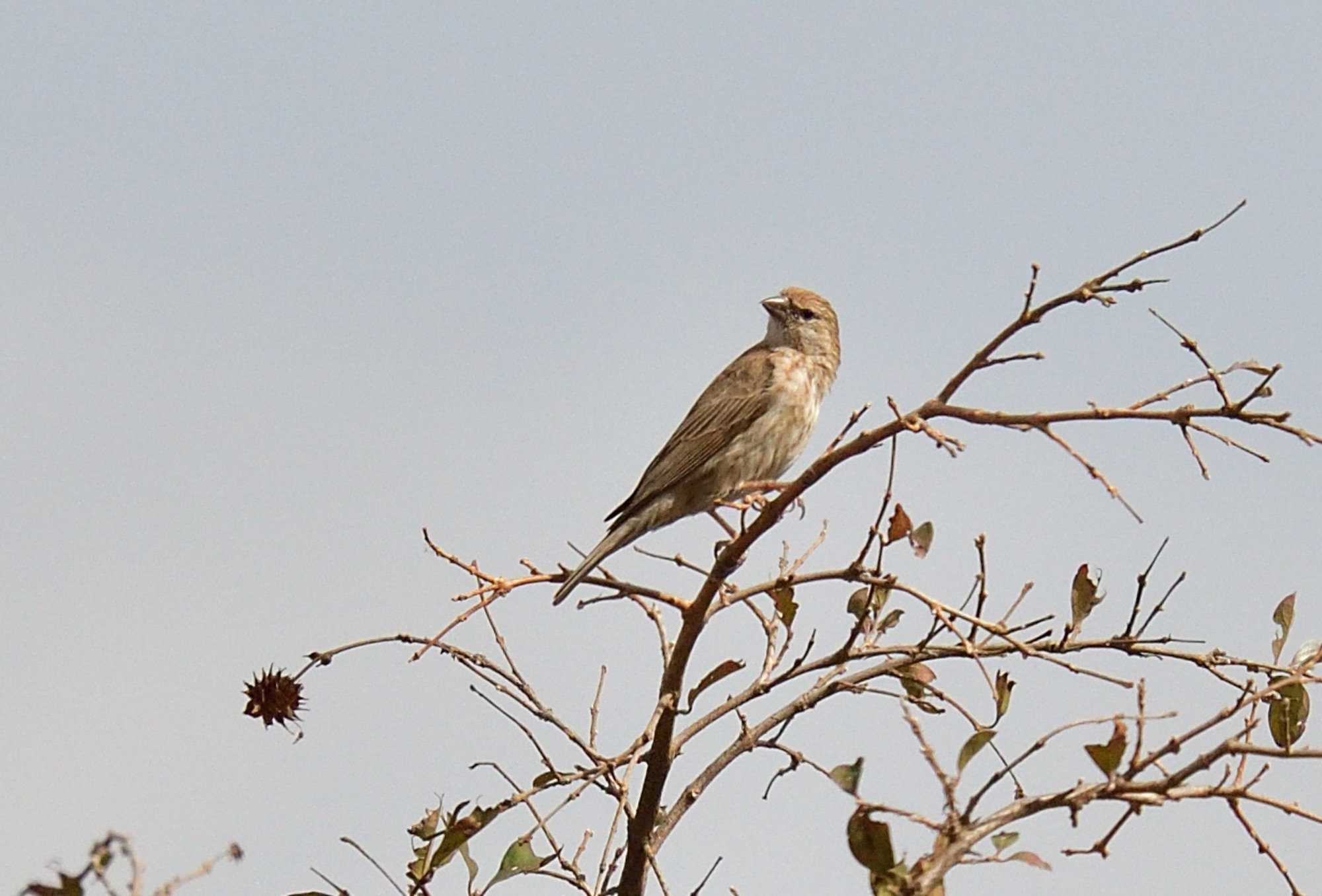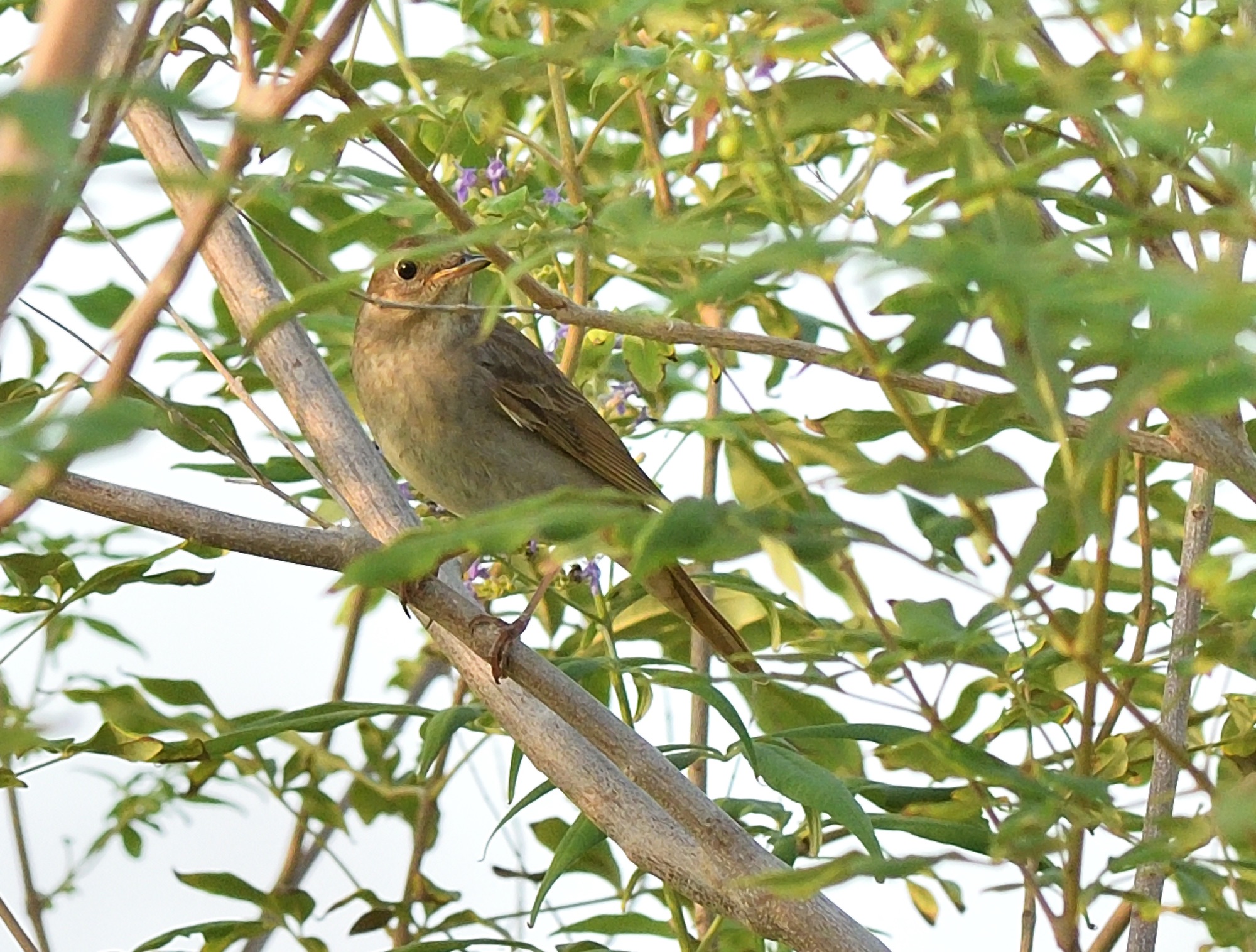SAUDI ARABIA & KUWAIT Arabian Endemics & Western Palearctic Specialities
***** KUWAIT PRE-TOUR EXTENSION ****
Pre-tour Day 1 - 15th April
Arrival into Kuwait City and transfer to nearby hotel, where we will spend the next 5 nights. We have some specific targets during our time in Kuwait but as this small country is on the edge of the Western Palearctic, it's going to be a great way to bump up your WP list!
Pre-tour Days 2 - 5
We will be staying in the same hotel for our whole time in Kuwait, so things should be pretty relaxed. but that's not to say the birding isn't going to be electric! Our primary target is Afghan Babbler and what a top-notch species for anyone's Western Palearctic list as Kuwait is currently the only safe & consistant site to add this to your life list! Our other primary targets are going to be species that are easier to see here than in Saudi Arabia such as Hypocolius, and an all-day pelagic will be taken in order to find Socotra Cormorant. We will need a bit of luck, but there's a reasonable chance of Basra Reed Warbler here and we will try very hard to find one!
With our Western Palearctic lists in mind it's going to add an extra, exciting dimension to our time here as we explore several city parks & pivot fields that usually attract a mouth-watering list of migrants. This is where we hope to find a Basra Reed Warbler, but how about species such as Turkestan Shrike, White-throated Robin, Semicollared & Red-breasted Flycatchers, Barred Warbler, Indian Silverbill, Yellow-throated Sparrow, Pale Rockfinch, Cinereous Bunting & more. Jahra Pools Reserve could give us Grey-headed Swamphen, Red-wattled, Spur-winged & White-tailed Lapwings, Pied & White-throated Kingfishers, Moustached & Upcher's Warblers, as well as a few raptors such as Pallid Harrier, Eastern Imperial Eagle and others. There's also a whole range of shorebirds including the much-wanted Crab-Plover (great WP tick!), Greater & Tibetan Sandplovers, Broad-billed & Terek Sandpipers. And gulls! Oh boy! there's Pallas's, Heuglin's & Steppe Gulls, plus on our pelagic we can add Socotra Cormorant, Lesser Crested, White-cheeked & Bridled Terns, Brown Booby and there is even a chance of the isolated Arabian race of Red-billed Tropicbird too! Some classic desert-style birding can give us Bar-tailed, Temminck's, Greater Hoopoe, Desert & Turkestan Short-toed Larks. There's also a chance of Arabian Lark too, but as ever, it's a tough one.
There's plenty of other important Western palearctic species to find including Little Crake, Namaqua Dove, Arabian Green Bee-eater, Pale Crag-Martin, Black Bush-Robin, Isabelline Shrike, Little Swift, African Palm Swift, White-eared & Red-vented Bulbuls, African Stonechat, Arabian Wheatear, Bank Myna, Delicate Prinia, Streaked Scrub-Warbler, Menetries's Warbler, Red-throated Pipit, Nile Valley Sunbird, Black-crowned Sparrow-Lark, Cinnamon-breasted Bunting & Ruppell's Weaver amongst many other possibilities.
Pre-tour Day 6 - 20th April
Final morning's birding we will transfer to the airport for the 90 minute flight to Riyadh and start of our Saudi Arabia tour.
*** SAUDI ARABIA MAIN TOUR ****
Day 1 RIYADH AREA - 21st April
You should plan to arrive the day before (if not participating in the Kuwait pre-tour extension) as we will head out into the desert very early this morning (5am) in search of our main target bird - Arabian Lark. Amidst this huge desert landscape we also could find Cream-colored Courser, Asian Desert Warbler, Pied Wheatear, Brown-necked Raven, Temminck’s Lark, Thick-billed Lark, Bar-tailed Lark, Desert Lark, Greater Hoopoe-Lark, White-crowned Wheatear, Blackstart, Trumpeter Finch and Striolated Bunting. We can also observe migration in the middle of the desert if conditions are correct and on previous tours we have seen Red-necked Phalarope, Eurasian Golden Orioles, White-throated Robin, Menetries's, Barred & Marsh Warblers, Whinchat and others. Sometimes Chestnut-bellied Sandgrouse are also present. If there's any news on Desert Owl sightings we can try tonight. Night in Riyadh.
Day 2 RIYADH AREA
We have added an extra day to our stay around Riyadh in order to explore areas to the south of the city. Surprisingly, there are marshes, lagoons, lakes and reedbeds within an hour's drive south where Basra Reed Warbler sometimes breed. There are also Ferruginous Duck, Spur-winged Lapwing, Little Bittern, Purple & Squacco Herons, Black-winged Kite, Long-legged Buzzard, White-throated Kingfisher, Arabian Green Bee-eater, African Collared Dove, Namaqua Dove, Pallid Swift, Arabian Great Grey Shrike, Graceful Prinia, and Eastern Olivaceous Warbler. We could also track down Hooded or Pied Wheatears here too.
It's also a great area for migrants, such as flocks of Blue-cheeked and European Bee-eaters streaming overhead, Pallid & Little Swifts, Masked, Red-backed and Turkestan Shrikes, as well as Indian Silverbill, Red Avadavat & Streaked Weaver, plus we have a better opportunity to find Pharaoh Eagle-Owl too. Night in Riyadh.
Days 3 -4 AL BAHA - KHAIRA FOREST PRESERVE
We will take an early morning flight to Al Baha where we will predominantly be birding amidst the spectacular landscape of the Sarawat Mountains, searching for a number of Arabian endemics and specialities. Our reason for coming here (and no other tour companies do... yet!) is this is the best area in Saudi Arabia for Arabian Grosbeak. Amidst beautiful juniper-clad valleys we should be able to find this spectacular Arabian endemic. There's also a number of our other major target species to see here such as Philby's Partridge, Arabian Woodpecker, Arabian Wheatear, Gambaga Flycatcher, Arabian Babbler, Arabian Warbler, Yemen Thrush, Arabian Serin, Yemen Linnet and Arabian Waxbill, Other species to keep an eye out for here include a good selection of resident and migrating birds such as Levant Sparrowhawk, Eurasian Hoopoe, Masked Shrike, Pale Crag-Martin, Long-billed Pipit, Little Rock-Thrush, Brown Woodland Warbler, Abyssinian White-eye, Palestine Sunbird, Ortolan Bunting, Ruppell's Weaver and Cinnamon-breasted Bunting. If we havent tracked down a daytime Arabian Scops-Owl we have a very good chance of finding one this evening, whilst Montane Nightjar is also reasonably common here. A visit to Thee Ain Ancient Village is often worthwhile for migrants, as well as Bruce's Green Pigeon, Black Bush Robin and Arabian Sunbird.
Day 5 AL BAHA - TANOMAH
As long as we've scored the grosbeak we will visit one or two nice secluded valleys this morning as we head south to Tanomah. Picnic breakfasts are the order of most days and we have one or two lovely spots lined up and can start our search for Arabian Partridge. You just never know what to expect during migration season and we could well start seeing the first of many Marsh Warblers today, that can sometimes take a while to i.d correctly given their skulking nature, as well as flocks of European Bee-eaters streaming overhead.. We could also see Olive Pigeon, White-browed Coucal, Grey-headed Kingfisher, and more Yemen Thrushes, Yemen Linnets, Arabian (Olive-rumped) Serins and Arabian Waxbills too.
Continuing south we will call into Wadi Dahna and make our first attempt at the Saudi endemic Asir Magpie, whilst we now have better chances of our first Yemen Warbler as well. With migration in full swing, we will probably be tripping over Blackcaps and Willow Warblers, We've always had good luck with Arabian Woodpecker and the buryi race of Scrub Warbler here, plus there's usually some spectacular male Violet-backed Starlings around as well.
Early this evening we will visit Al Mahfar Park and wait until dusk when there's usually a co-operative Arabian Eagle-Owl around. Night in Tanomah.
Day 6 TANOMAH - ABHA
Before breakfast at the hotel we will take advantage of the early morning to explore a number of local sites and may return to Al Mahfar Park to see what migrants are around, and previously we've seen Eurasian Griffons, Verreaux's Eagle, Bonelli's Eagle, Crested Honey Buzzard, Long-legged Buzzard, Shikra, African Pipit & others. Nearby Wadi Al Gathal is great for Arabian & Philby's Partridges, Olive Pigeon, Dusky Turtle-Dove & Asir Magpie.
It's just under an hour and a half's drive to Abha, where we will spend the night. So, after picking up provisions for a field lunch we will continue on to the Habala area where we hope to see a few more important target species. First up will be some 'easy' Rufous-capped Larks that breed on the escarpment here. Taking shade beneath some trees we will enjoy a fine picnic and some cold drinks and have some time to explore the dense cover as migrants such as Thrush Nightingale, Barred & Marsh Warblers, Common Redstart and Spotted Flycatcher have been seen on our previous tours. Moving on a short distance to the edge of the escarpment are some huge cliffs where a flock of Yemen Serins can be found, whilst nearby Buff-breasted Wheatear, Tristram's Starling & Fan-tailed Raven can also be seen. Night in Abha.
Day 7 ABHA - RAIDAH PRESERVE - JIZAN
Following a very early morning departure to try for Arabian Scops-Owl and Abyssinian Nightjar before dawn if needed we will enter the premier mountain birding site of the Raidah Preserve. We can cover a huge altitudinal range from 2250m down to 650m very quickly on the steep precipitous road, and thus see a wide variety of species. This is probably the easiest site to see Arabian Partridge and this may well be our only major target left at this stage of the tour. It's also a great place to see a number of 'Afro-tropical' species to spice up our list, such as Shikra, Diederik Cuckoo, White-browed Coucal, African Grey Hornbill, Grey-headed Kingfisher, White-throated Bee-eater, African Paradise-Flycatcher, Black-crowned Tchagra & Little Rock Thrush.
After a few hours here we can return to the hotel for breakfast before heading to the coast and a new rage of species. Just where we go depends on the current news and status of the nomadic Arabian Golden Sparrow. It's a very tricky species to catch up with but we have added an extra day to our tour just to make sure we have the best chance of catching up with it. We will spend the first of 4 nights in Jizan.
Days 8 - 10 JIZAN - ABU ARISH - SABYA
The coastal hotspot of Jizan will one day become a 'mecca' for visiting birders as it offers some of the most exciting birding in the Middle East with a number of special target species on offer, as well as some great migration at this time of year. It's a great base from which to explore the shoreline, lagoons, high-tide roosts, mangroves and sweeping mudflats. High on our wishlist will be the mangrove-dwelling avicenniae “Mangrove Reed Warbler” and “Mangrove White-eye” both of which may be upgraded to full species status (but I wouldn't hold my breath on the Reed Warbler!). We're sure to see a few Clamorous Reed Warblers in the mangroves as well.
One thing we will be doing differently to every other tour company is take a ferry to The Farasan Islands, lying some 40kms out into the Red Sea. We are pretty sure to see quite a few Sooty Falcons and get some amazing photo opportunities as they effortlessly soar overhead, across the deep blue sky. By taking a private boat charter we will spend 4 hours cruising the numerous islets getting close to flocks of terns that have settled on the rocks. Species such as Bridled, White-cheeked, Lesser Crested and Great crested Terns, Brown Booby, Common Noddy and White-eyed Gulls will fill up your memory cards and provide stunnig views. Hopefully we can bag another Goliath Heron here too! The ferry journey itself could provide the odd surprise as both Masked & Red-footed Boobies are an 'outside' possibility and it's sure to be an incredible day.
Our other major target along the coast is the stunning Crab-Plover, which is usually numerous and easy to see. In fact, we should get some of the best views you can imagine of this cracking species! Also along the coast, you could say it's shorebird heaven as the mudflats and lagoons hold a wide selection of species such as Greater & Tibetan Sandplovers, Temminck's & Little Stints, Broad-billed Sandpipers can be numerous, as can Terek Sandpipers, and there's many more familiar species to keep us entertained. As these species are migrating north to their siberian and arctic breeding grounds, many of them are in full breeding plumage so scoping Dunlins and Curlew Sandpipers at this time of year certainly adds an extra dimension! There's so much to see along the coast and we are sure to pick up species such as Caspian & Gull-billed Terns loafing on the tideline, whilst spectacular flocks of White-winged Terns provide a stunning sight. Ospreys and Pink-backed Pelicans often perch on the street lamps here, Sooty Gulls are common, Steppe and Heuglin's Gulls are present in small numbers.
Heading inland to the magical Al Saad/Jizan Dam Lake could provide us with some of the most memorable sightings of the entire tour . If there's a rarity to be found, then it could well be here. On the 2024 tour we were fortunate to see 4 Wire-tailed Swallows - a 1st for Saudi Arabia and discovered here the previous month. We've also seen African Openbill here on a previous tour - another mega for Saudi Arabia. But we need to get there at first light as it gets hot very quickly! There are several viewpoints to scope the lake, as well as one or two access points to reach the warter's edge. There's so much potential here and special birds here include Helmeted Guineafowl, Hamerkop, Yellow-billed Egret, Red-eyed Dove, African Palm Swift, Nile Valley Sunbird and White-browed Coucal. This may well be the only site we get to see any wildfowl such as Ferruginous Duck & Garganey, whilst other prominent species include Black-crowned Night-Heron, Purple Heron, Eurasian Spoonbill, Glossy Ibis, Pink-backed Pelican, Spur-winged Lapwing, flocks of White-winged Terns, Namaqua Dove, White-throated Bee-eater, and Black-crowned Sparrow-Lark. If we are lucky, there's also a chance of Little Bittern & Gabar Goshawk, whilst an evening visit is necessary to catch up with Nubian Nightjar and Lichtenstein’s Sandgrouse. Plain Nightjar may also be present but they usually dont arrive until mid-May.
Another great location inland from Jizan are the agricultural fields around Sabya. These green fields can turn up anything during migration season and we've previously seen Black-headed Heron, Black-winged Kite, Steppe Eagle, Singing Bushlark, flocks of Western Yellow Wagtails comprising 5 races, Black Scrub-Robin, and also gives us a chance of Small Buttonquail and Harlequin Quail.
We will also explore the coastal parks for migrants and this is truly exciting as we have seen Abdim's Storks, Eurasian Golden Oriole, Eurasian Wryneck, Isabelline Wheatear, Great Reed Warbler, Greater & Lesser Whitethroats, Icterine, Marsh, Garden & Barred Warblers, Lesser Grey, Woodchat, Red-backed & Masked Shrikes, Thrush Nightingale, Rufous-tailed Scrub-Robin, Red-throated & Tree Pipits amongst others.
Day 11 JIZAN - RIYADH - END OF TOUR - 31st April
We have one final morning's birding to catch up with any species still needed. Maybe checking for migrants in the parks, more shorebird watching along the coast or taking the opportunity to visit Al Saad Lake one more time. Whatever we decide to do, it will be a fun-filled, bird-filled and action-packed last morning. Oh and don't forget those Lesser Flamingo's too! And surely there's a Saunders's Tern somewhere here too!
All that remains is to have lunch and take an afternon flight back to Riyadh where the tour concludes.

